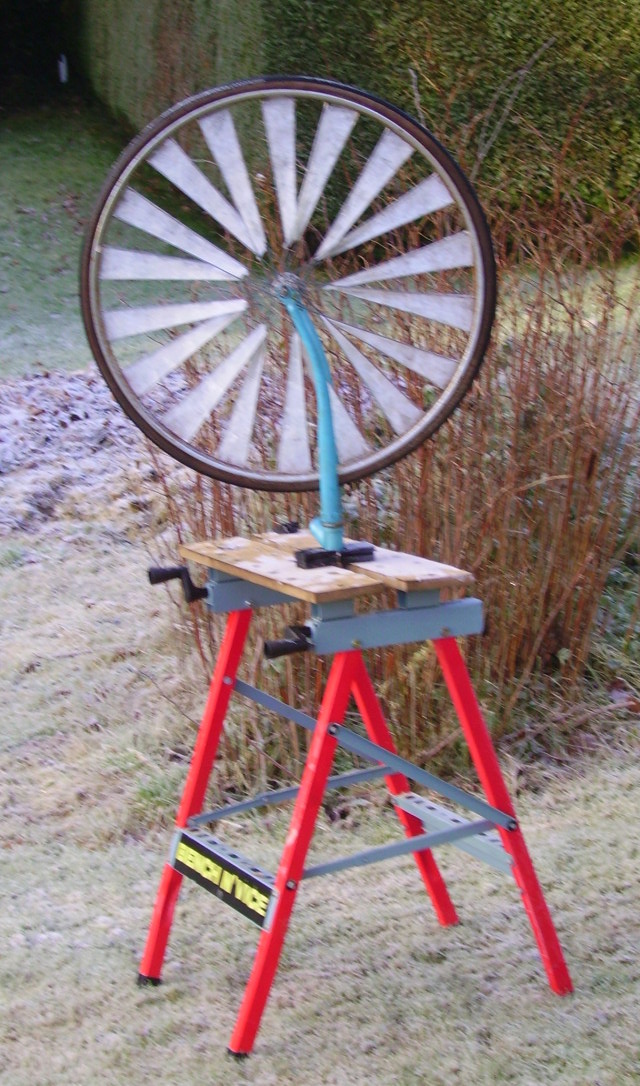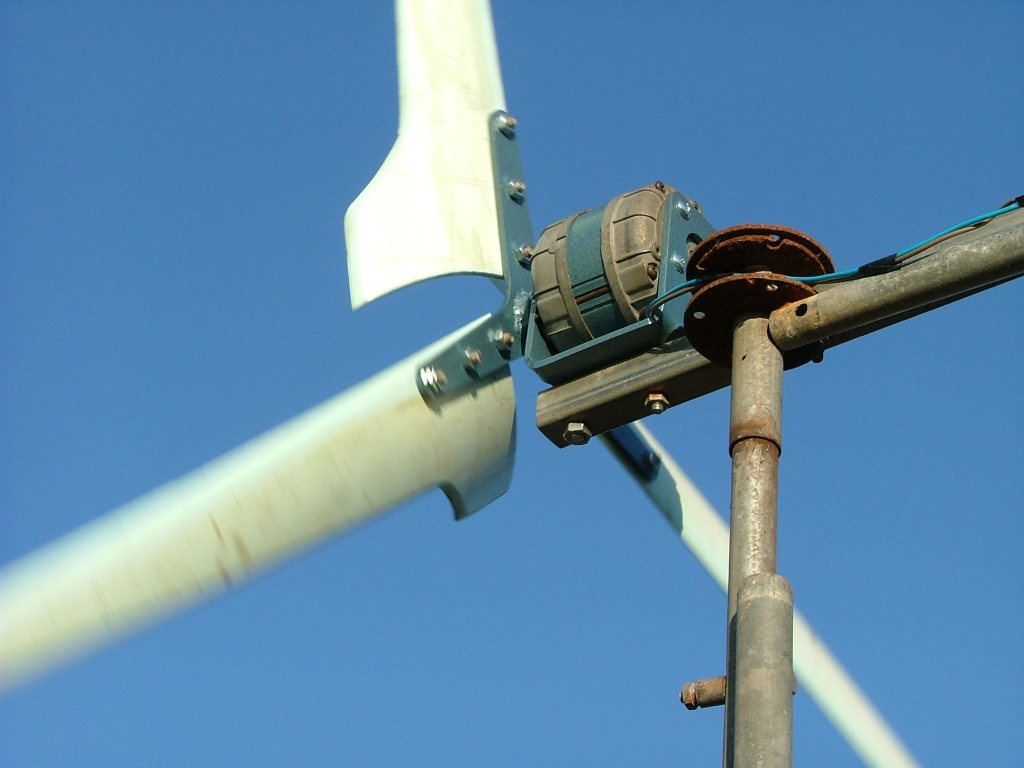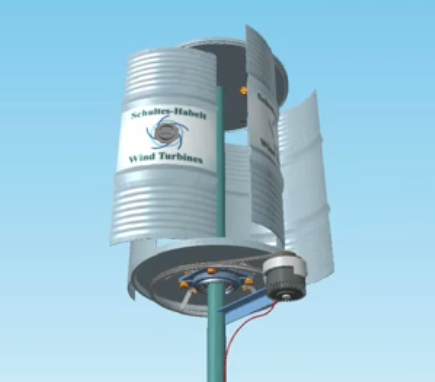Wind Power Systems
SIMPLE Do It Yourself Power
 I can recall when I was a child, I used to sit with a toy pinwheel and blow on it until I was blue in the face. I was always fascinated by wind, and its ability to move things. From flying kits to sail boats, wind is a source of energy that is seemingly inexhaustible.
I can recall when I was a child, I used to sit with a toy pinwheel and blow on it until I was blue in the face. I was always fascinated by wind, and its ability to move things. From flying kits to sail boats, wind is a source of energy that is seemingly inexhaustible.
Then I began to learn about electricity. Motorized fans were fascinating to me. The motor would turn, the fan would turn, and it would create wind. How cool is that? When I learned more, I found out that the process could be reversed. If you can turn the blades on the fan, it turns the motor, which generates electricity! Awesome!
But in the end - there are two kinds of electricity - usable, and unusable.
I can create electricity with a Wimshurst machine, or by scooting my feet across the carpet - but it isn't really usable electricity. There isn't enough produced to make a difference. On the flip side - if you make TOO much electricity, you can destroy sensitive components and circuitry. There has to be a balance.
After several years of experimentation and schooling, I came across a very simple method by which you can create usable electricity. This page will go over a BASIC and easy to build generator, that you can use in your home - then as I write more, I'll get into the more effective methods so you get the full picture.
There I was in grade school. We had a meeting in the auditorium. The electric company was giving a presentation on power conservation. (Companies used to do such things). They called for a volunteer. Someone on the track or football team. This burley kid goes up and they tell him to start pedaling on this bicycle. Not a problem. Don't stop until he says to. Ok. So this big kid starts riding the bike for all he's worth. Now the guy from the electric company is talking he turns on a TV set and a 100 watt light bulb. He says, "When I flip this switch - the boy on the bike will be powering these two devices." He flipped the switch, the poor kid grunted, and started pedaling MUCH slower! He said how much energy was being used every minute we watch TV, etc. Then he turned off the light. Now the kid could pedal at a normal pace. There was resistance, but he wasn't dying on the stage anymore. His point was that by turning off lights, we could conserve energy, and make it easier for all of us to have what we need in the future. Good presentation.
 I learned:
I learned:
1) Turn off the lights when not in the room
2) A car's alternator can be used to generate electricity.
So guess how my first windmills worked?
I used a bicycle wheel and put tin foil on every other spoke (similar to the picture on the right). I removed the tire and replaced it with a fan belt. I ran the fan belt to a generator, and viola! my first windmill was born!
There were several problems with it, but hey- it was my first attempt!
First, it wouldn't turn to face the wind, so unless the wind was facing the exact right direction, it didn't work all that well.
Second, once you put a load on it, it bogged down (like the kid on the bike). It only created 12 Volts DC, which wasn't a big problem, But at 12 Volts, a 100 Watt light bulb used 8 Amps of power - about 10 times the current drawn by the same light bulb at standard house voltage. In short - the lower your voltage, the more current is needed to produce the same amount of work.
Third, the wind doesn't always blow. You need some way to store the electricity for times when the wind is in the duldrums. Batteries (think car batteries) work ok, but you still need to convert the voltage from 12 Volts. The answer to problems 2 and 3 lie in a batter + inverter system.
 So my second attempt at a windmill was like the one to the left. At first, I used wooden blades, then learned to use PVC (Cheaper and easier to form). I also figured out along the way that MORE blades isn't necessarily a good thing. 3-5 blades is optimal. Any more, and you simply have too much wind drag.
So my second attempt at a windmill was like the one to the left. At first, I used wooden blades, then learned to use PVC (Cheaper and easier to form). I also figured out along the way that MORE blades isn't necessarily a good thing. 3-5 blades is optimal. Any more, and you simply have too much wind drag.
Note that on the back side (not pictured) is a vane that when the wind blew, it would turn the whole contraption on the central pivot point. It created more electricity than my first attempt, and gave me enough power to run several light bulbs, a laptop, etc. Certainly not enough to power an oven or an arc welder.

 I got to watching the windmill on a windy day, and noticed that it spent a lot of time swinging back and forth, and when it did, the generator lost momentum. That equates to lost energy. I came up with the idea of a VERTICAL windmill using an old oil drum (and my trusty generator).
I got to watching the windmill on a windy day, and noticed that it spent a lot of time swinging back and forth, and when it did, the generator lost momentum. That equates to lost energy. I came up with the idea of a VERTICAL windmill using an old oil drum (and my trusty generator).
Note there are many different variations on this design. Most have the oil drum mounted on a vertical stand with a pully bolted to the center - usually on the bottom. The pully is then connected to a fanbelt that runs the generator. The design on the left is more stable, but the one on the right is easier to construct (no welding required).
The elegance of the vertical design is that it doesn't have to "face" the wind. Whichever way the wind shifs - it is already in the optimal position to catch it. You also don't have to mess with wires getting twisted inside of, or around a pole.
Back to 
 I can recall when I was a child, I used to sit with a toy pinwheel and blow on it until I was blue in the face. I was always fascinated by wind, and its ability to move things. From flying kits to sail boats, wind is a source of energy that is seemingly inexhaustible.
I can recall when I was a child, I used to sit with a toy pinwheel and blow on it until I was blue in the face. I was always fascinated by wind, and its ability to move things. From flying kits to sail boats, wind is a source of energy that is seemingly inexhaustible. So my second attempt at a windmill was like the one to the left. At first, I used wooden blades, then learned to use PVC (Cheaper and easier to form). I also figured out along the way that MORE blades isn't necessarily a good thing. 3-5 blades is optimal. Any more, and you simply have too much wind drag.
So my second attempt at a windmill was like the one to the left. At first, I used wooden blades, then learned to use PVC (Cheaper and easier to form). I also figured out along the way that MORE blades isn't necessarily a good thing. 3-5 blades is optimal. Any more, and you simply have too much wind drag.

 I got to watching the windmill on a windy day, and noticed that it spent a lot of time swinging back and forth, and when it did, the generator lost momentum. That equates to lost energy. I came up with the idea of a VERTICAL windmill using an old oil drum (and my trusty generator).
I got to watching the windmill on a windy day, and noticed that it spent a lot of time swinging back and forth, and when it did, the generator lost momentum. That equates to lost energy. I came up with the idea of a VERTICAL windmill using an old oil drum (and my trusty generator).
